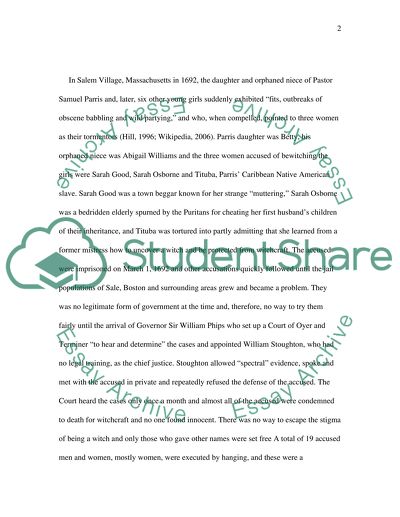Cite this document
(“Bridget Bishop: Salem Witch Essay Example | Topics and Well Written Essays - 1500 words”, n.d.)
Bridget Bishop: Salem Witch Essay Example | Topics and Well Written Essays - 1500 words. Retrieved from https://studentshare.org/miscellaneous/1527412-bridget-bishop-salem-witch
Bridget Bishop: Salem Witch Essay Example | Topics and Well Written Essays - 1500 words. Retrieved from https://studentshare.org/miscellaneous/1527412-bridget-bishop-salem-witch
(Bridget Bishop: Salem Witch Essay Example | Topics and Well Written Essays - 1500 Words)
Bridget Bishop: Salem Witch Essay Example | Topics and Well Written Essays - 1500 Words. https://studentshare.org/miscellaneous/1527412-bridget-bishop-salem-witch.
Bridget Bishop: Salem Witch Essay Example | Topics and Well Written Essays - 1500 Words. https://studentshare.org/miscellaneous/1527412-bridget-bishop-salem-witch.
“Bridget Bishop: Salem Witch Essay Example | Topics and Well Written Essays - 1500 Words”, n.d. https://studentshare.org/miscellaneous/1527412-bridget-bishop-salem-witch.


